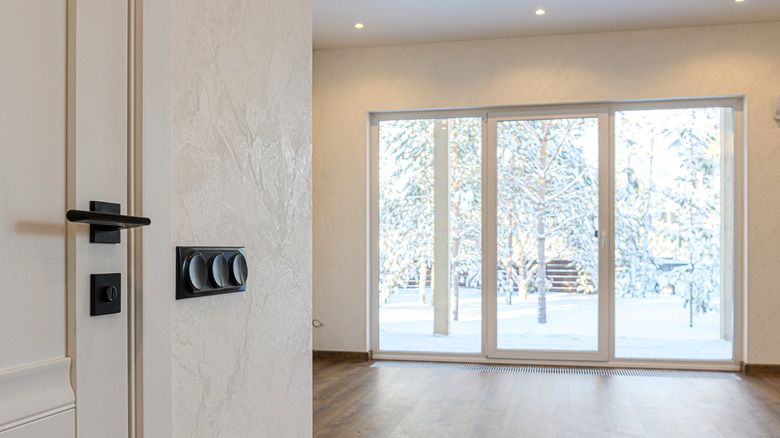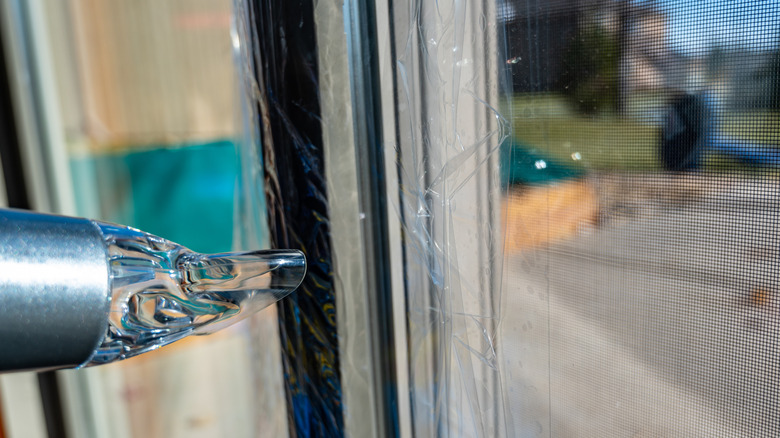How To Winterize Your Sliding Glass Door
Sliding glass doors are a wonderful feature for any home. They provide a great view, allow tons of natural light to enter whatever room they are in, and they create a wide entryway for outdoor comings and goings. The one thing they aren't that great at is keeping the winter chill from entering your home — especially if they are single-pane glass. That's why it's a good idea to take the time to winterize your sliding glass doors before the cold weather sets in. All it takes is a few simple steps, including a little clean up, adding screens, refreshing your seals, and adding a couple of additional barriers, and you'll be cozy in no time.
One of the unfortunate downsides of sliding glass doors that no one talks about is how they don't have a really high insulation ability. And sadly, many homeowners might feel like they have traded aesthetics for functionality. While it is true that modern sliding glass doors provide more insulation from winter's chill than their older predecessors, they still can be a source of air leakage if not properly maintained. If you have an older sliding glass door, there are a few telltale signs it might be time to replace it — like cracks, warping, or condensation. Upgrading your older door and winterizing it can dramatically reduce your heating bills and ensure you stay warm. However, if replacing your older sliding glass door is an option, it might be an investment that will pay for itself with the savings in heating costs.
Tips for winterizing your sliding glass door
The first step in winterizing your sliding glass door is to clean the track. Vacuum the debris out of the runner and use a wet cloth to scrub away any built-up grime, if necessary. Debris in the track can cause the door to not seal properly when closed. The next step is to remove any screens, if you still have them on. Having screens on your sliding glass door during winter can cause moisture build-up and water damage. You will then want to replace any damaged or missing weather stripping around the entire door. Doing this will prevent any drafts from getting in around the frame. You will also want to check the outside of your sliding door where the door frame meets the wall and re-caulk to ensure a tight seal.
After you've fixed the structural leakage areas, it's a good idea to add extra insulation to your door. You can either opt for adding an insulated panel to the fixed side of your door or purchasing a window film installation kit. This kit will create a barrier that acts in a similar way to an extra windowpane. Either method will work to provide an additional layer of insulation and keep drafts down.
Lastly, you can add even more cold-weather protection by getting one of the best types of curtains for sliding glass doors — blackout/insulated ones. These will help keep the chill out of your home, as well as look nice, and even provide added privacy.

